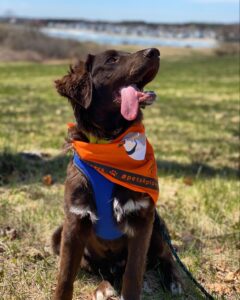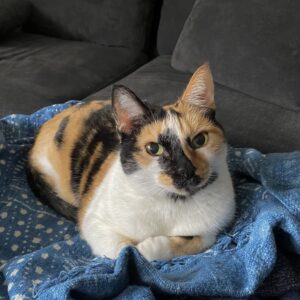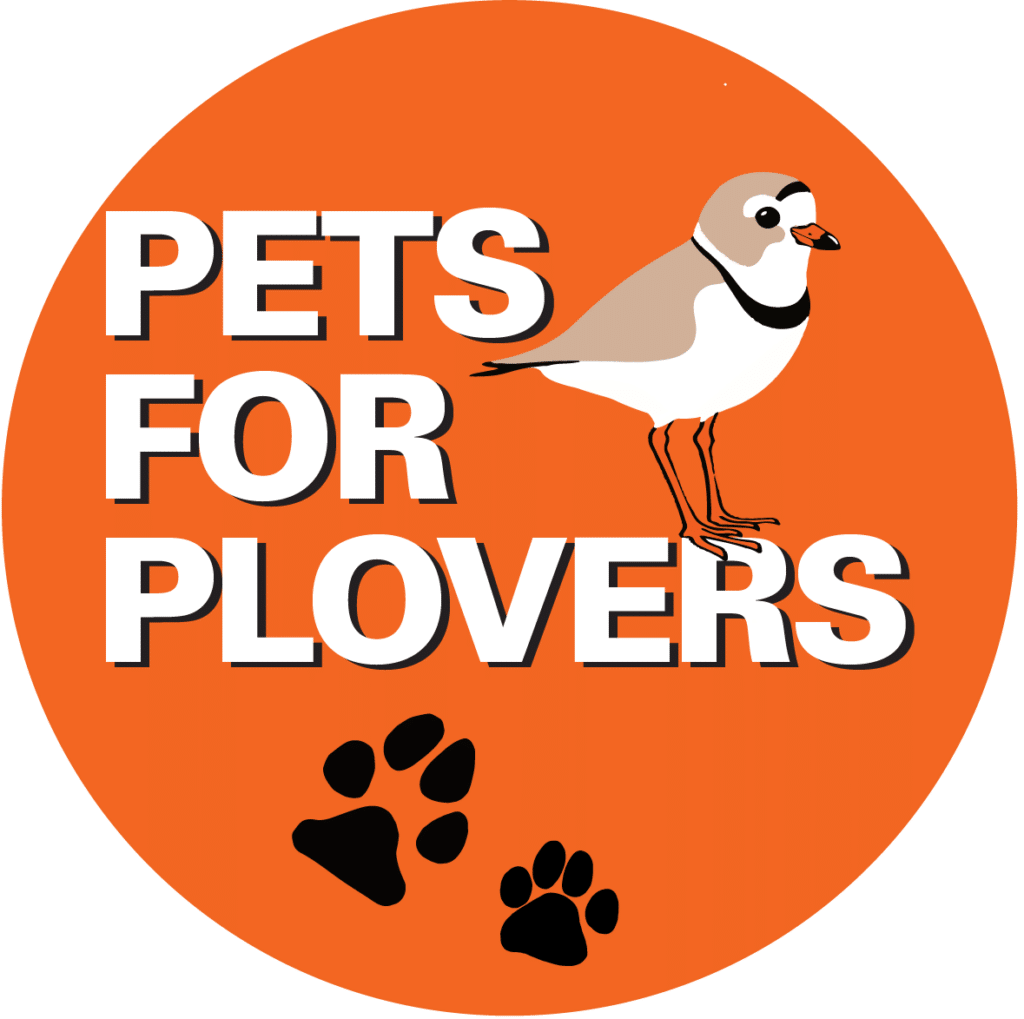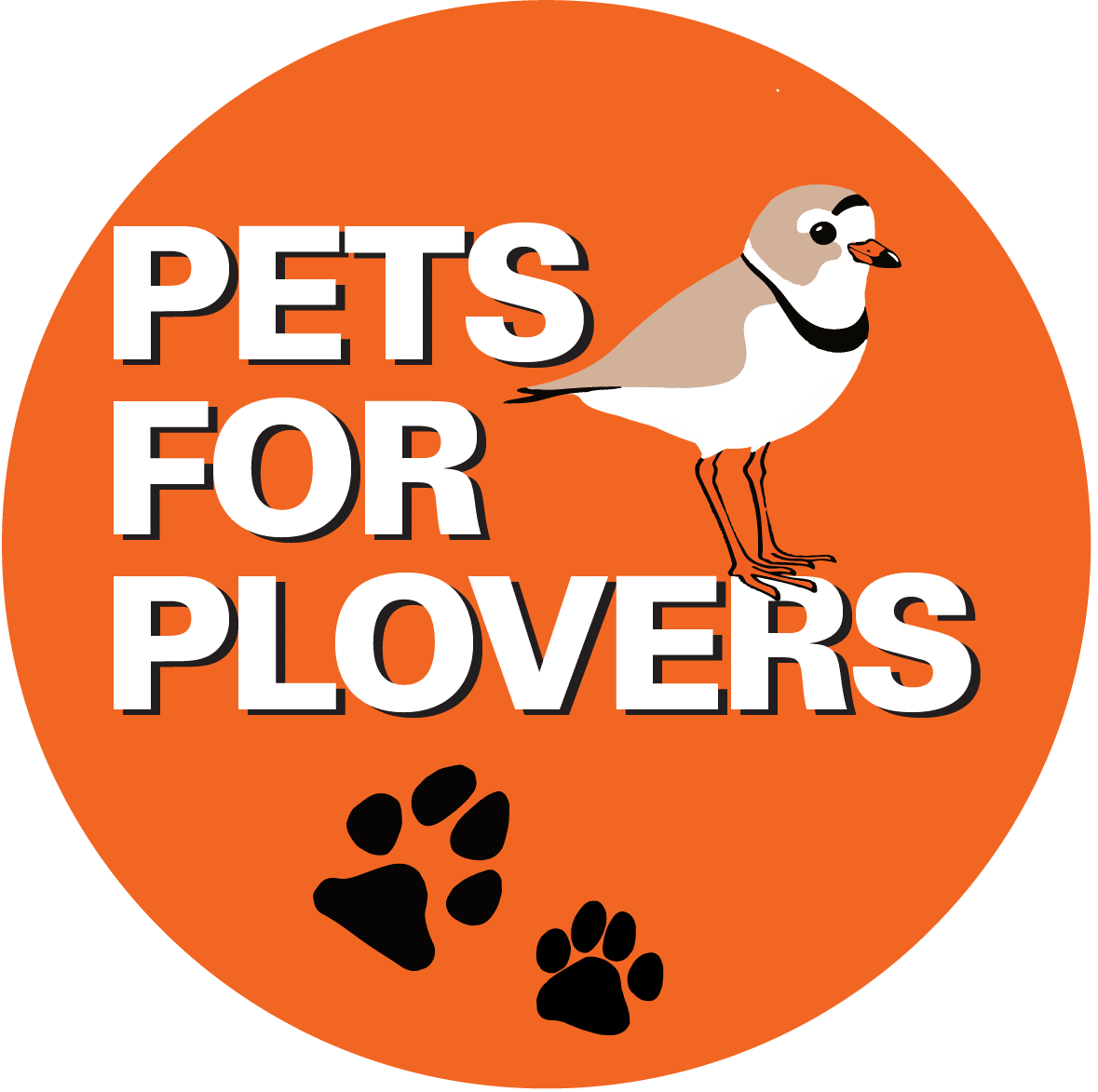How do pets contribute to Piping Plover conservation efforts?
- By spending quality time with their families away from beaches when possible.
Fortunately, Maine has an abundance of great places where we can enjoy nature with our friends without threatening endangered wildlife. For us, the beach is one of many great options for where we spend our time; for Piping Plovers, it is their only option. Broad, sandy beaches are their only home where they can raise their families.
- By staying on a leash when visiting dog-friendly beaches.
While many beach-goers can identify a dog who is friendly and gentle, plovers

cannot! To a Piping Plover, any dog, cat, or human who comes too close is seen as a deadly threat to themselves and their babies. This frightens parent plovers into leaving their eggs, their chicks, or wasting precious energy reserves on trying to flee from the threat. Even the most well-meaning people and pets can split up plover families!
- By enjoying the benefits of the indoor-cat lifestyle.
Choosing to give your cat an indoor-only life certainly helps the Piping Plover population to recover, but it also drastically increases the lifespan and health of your cat!

Cats are exposed to a number of deadly threats in the outdoors, including other cats, foxes and other predators, vehicles, harsh weather, and disease, just to name a few! Luckily, there are many wonderful strategies cat-owners can use to give their furry friends an adventurous, enriching, and safe life, all within the walls of your home.
How can all beach-goers help the plovers?
Give them space, and leave no trace!
Spotting a plover in the wild can be a very exciting and special experience! Due to their fragile nature, however, they are best observed through binoculars. Be sure to stay at least 100 feet away from any fencing, protected areas, and plovers. If you see a chick or a parent plover in distress, notify Maine Audubon’s Coastal Birds Team at (207) 245-2353 or plovertern@maineaudubon.org. Sometimes, what appears to be an injured bird turns out to be a false alarm. Pretending to have a broken wing, or freezing up, are both common defense strategies of Piping Plovers.
Holes in the sand pose a huge risk to plover chicks. When they fall in, there is no way for them to get out, which can lead to starvation. There’s nothing wrong with digging holes in the sand, but it is absolutely crucial that you fill it back in before leaving! This simple act could save the life of a plover chick. (It could also save a beach walker’s ankle)!
Take all of your belongings, including food and trash, with you when you leave the beach. Any items we leave behind can attract raccoons, foxes, skunks, and gulls, all of which prey on eggs and chicks.
Pets for Plovers is part of the Maine Audubon Coastal Birds Project.





